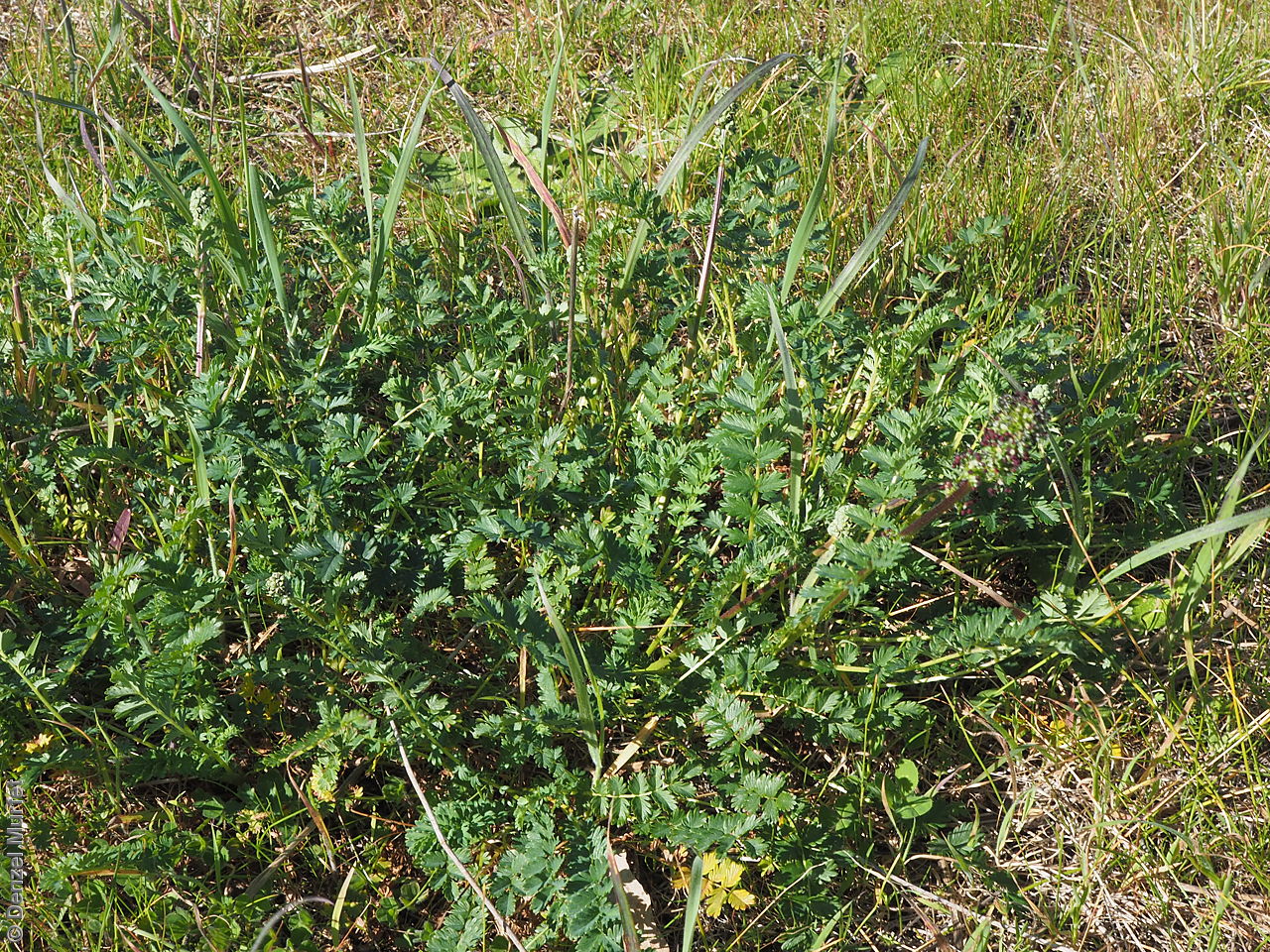
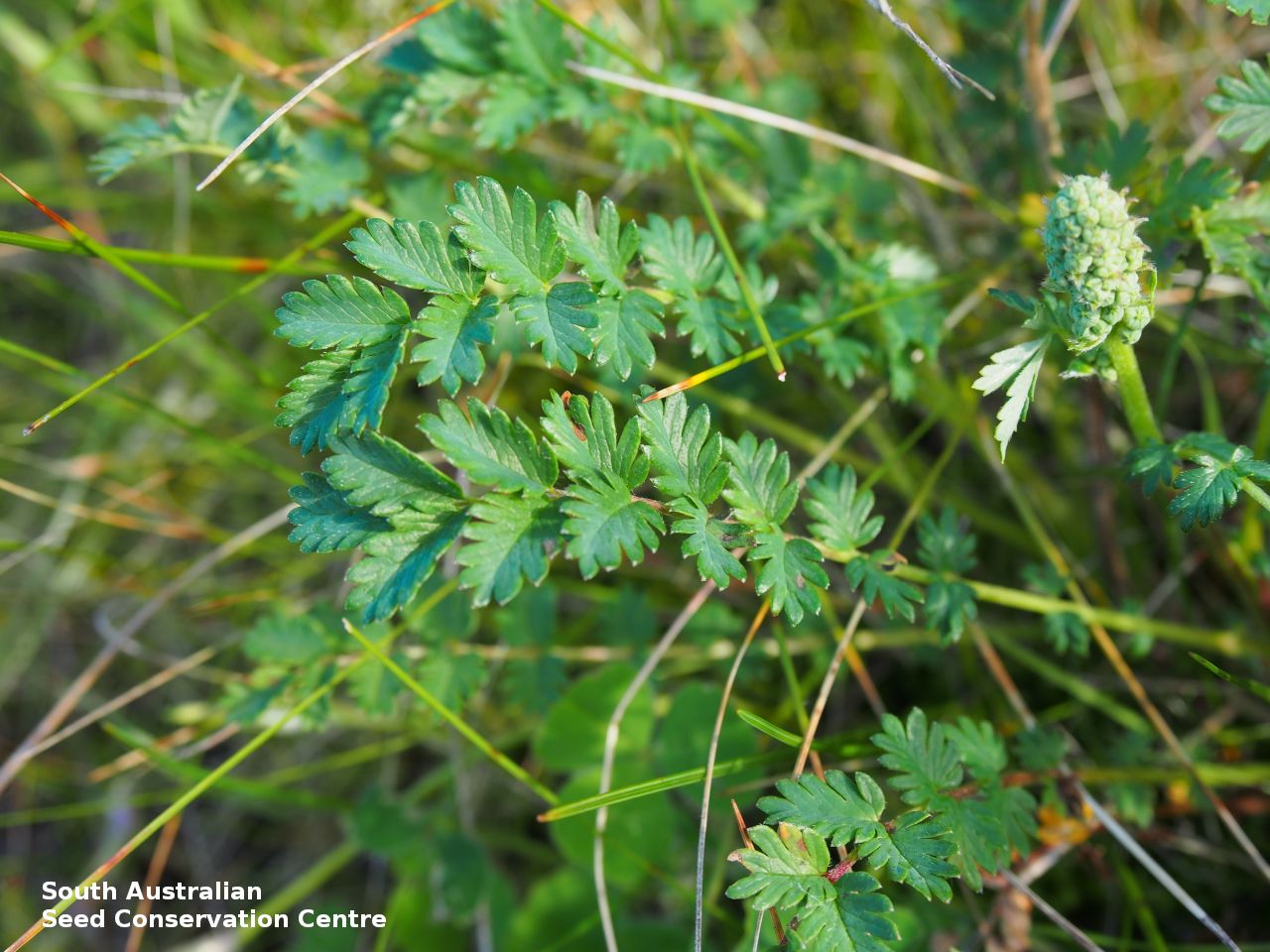
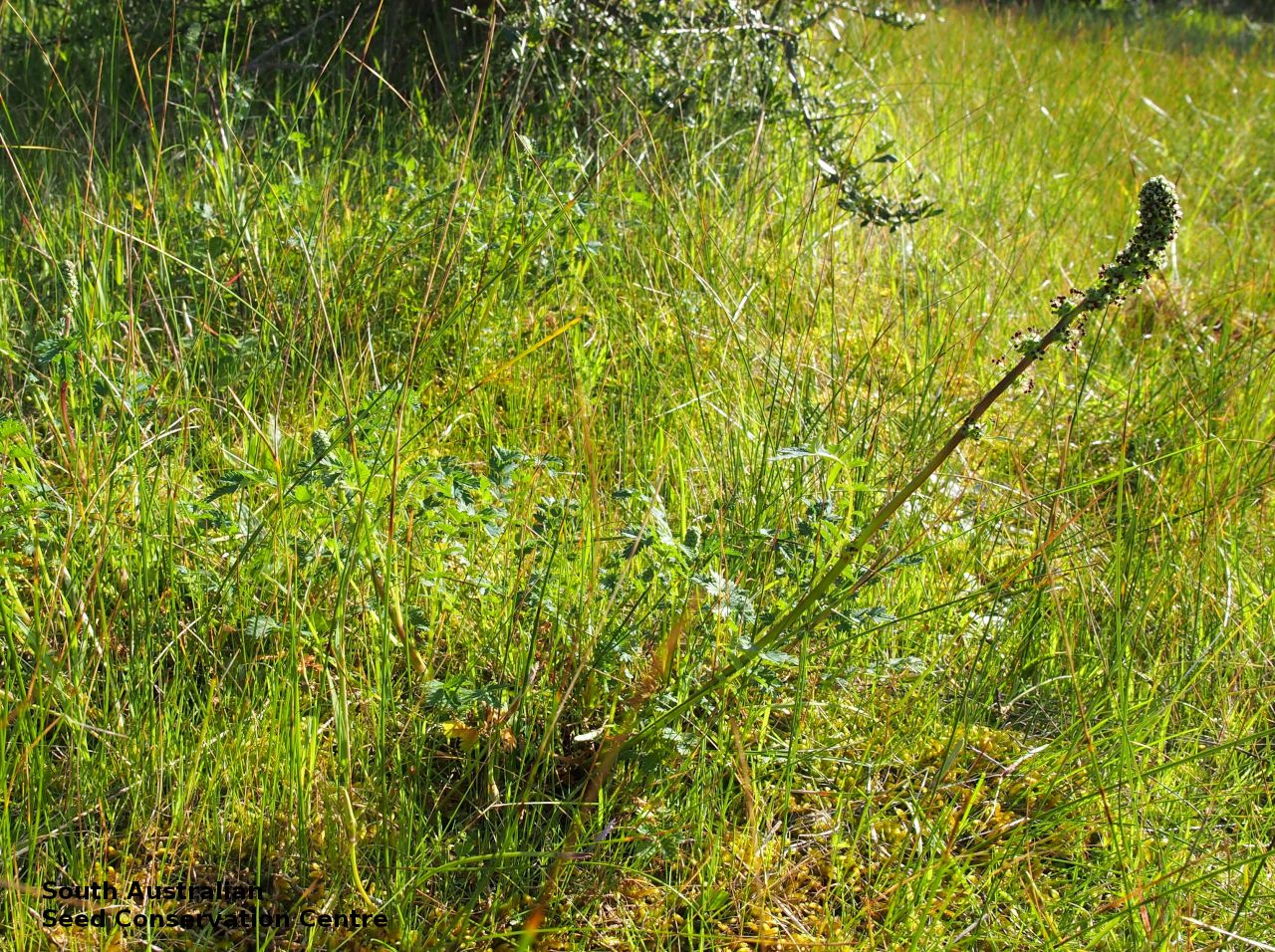
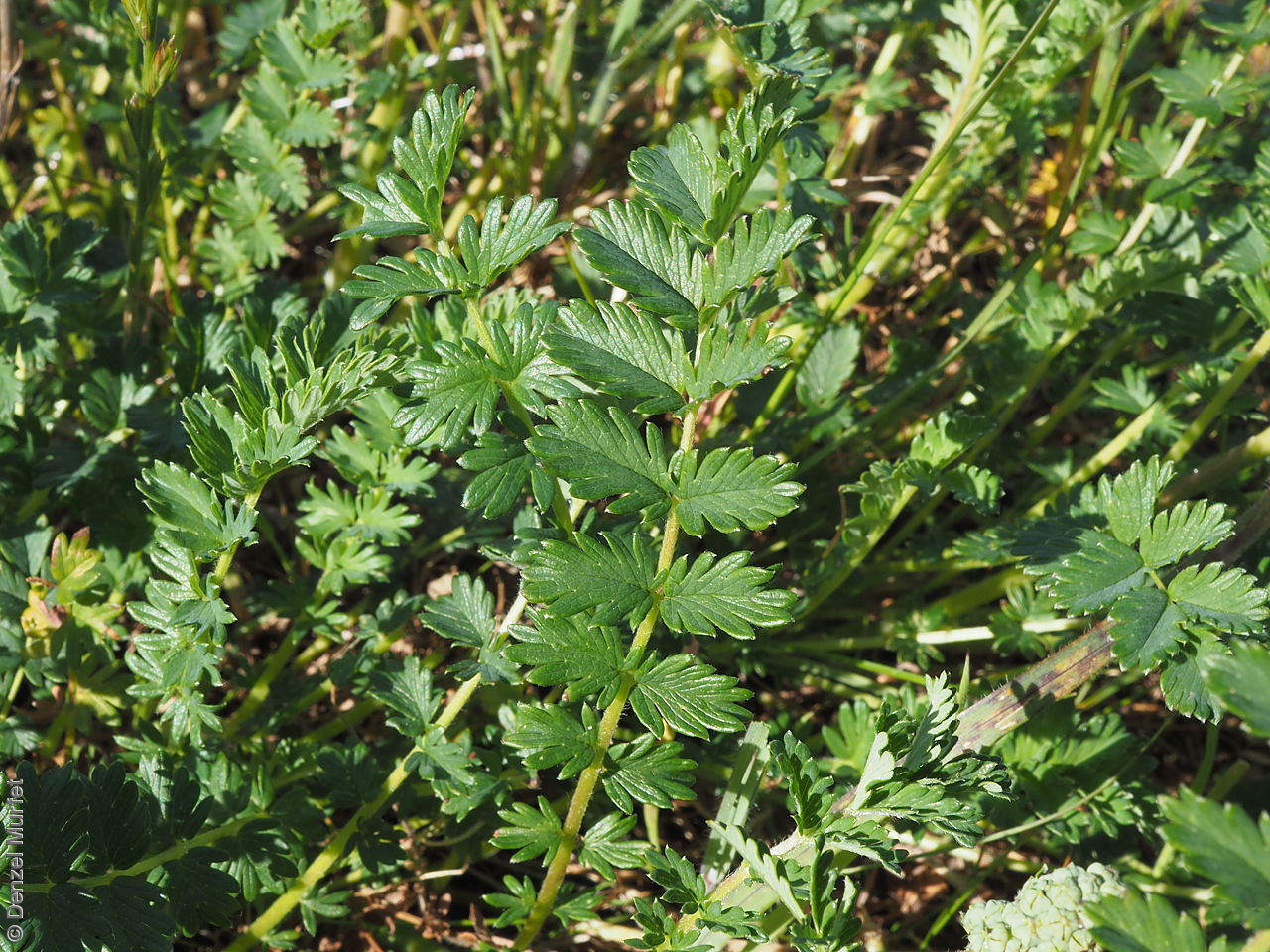
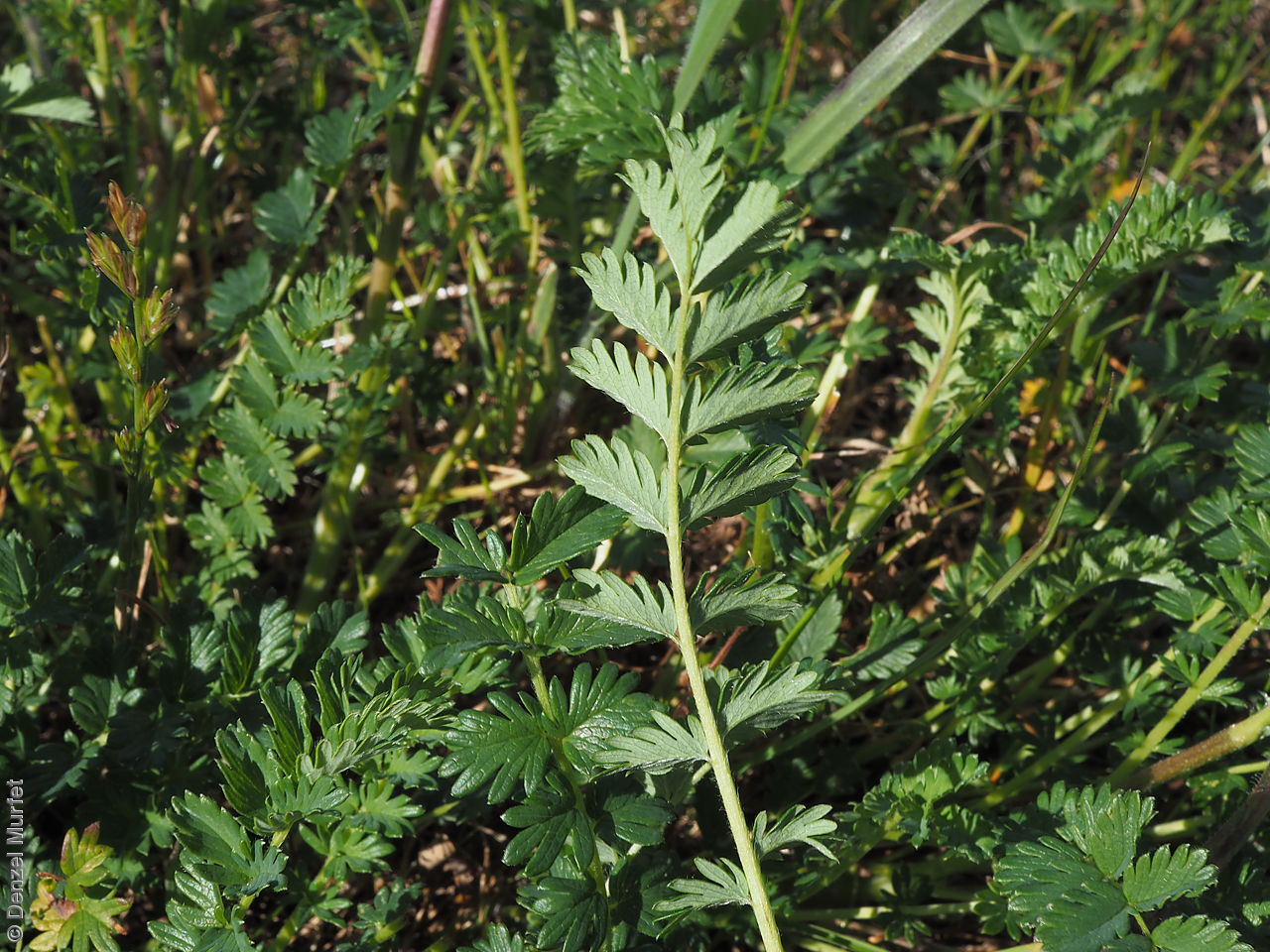
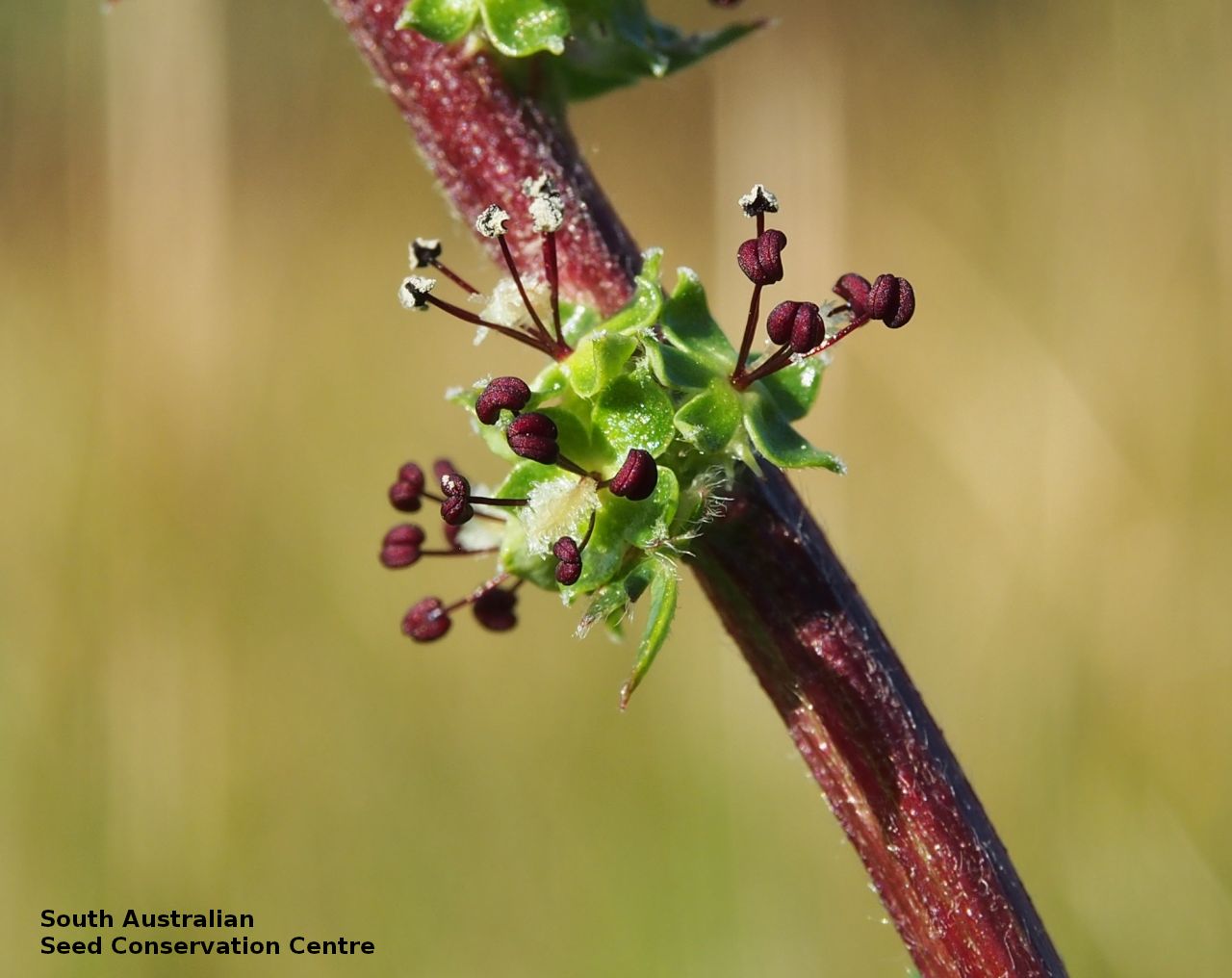
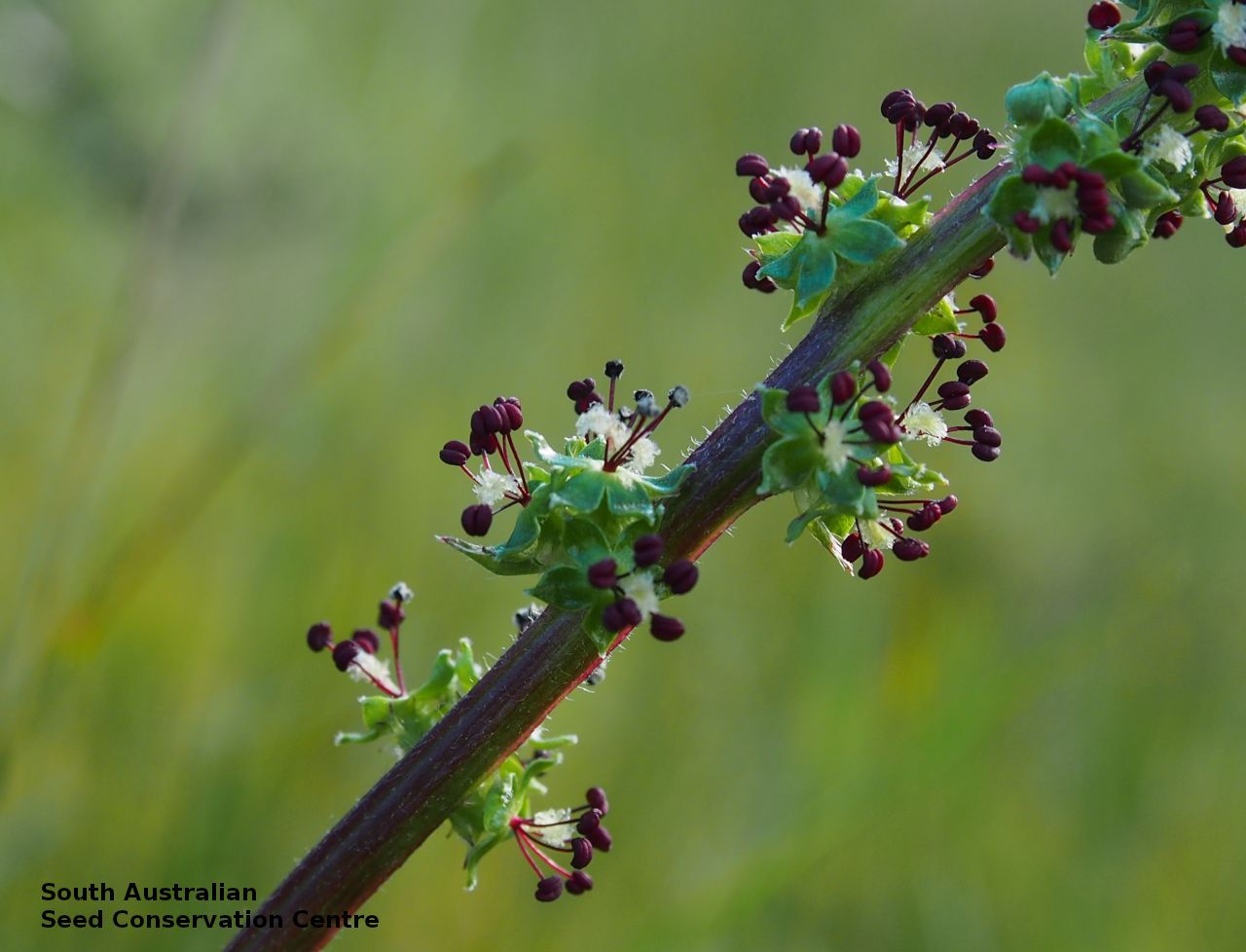
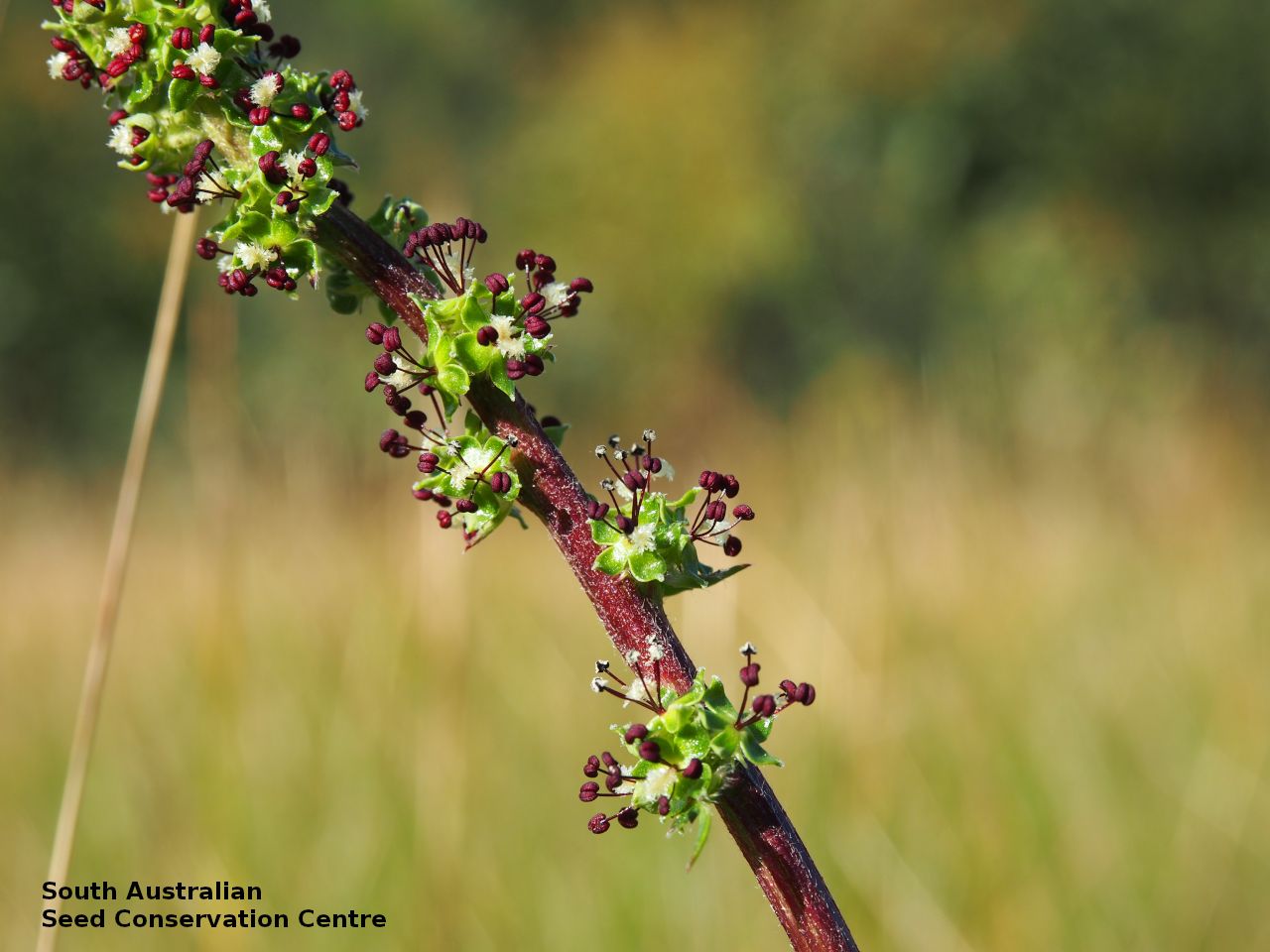
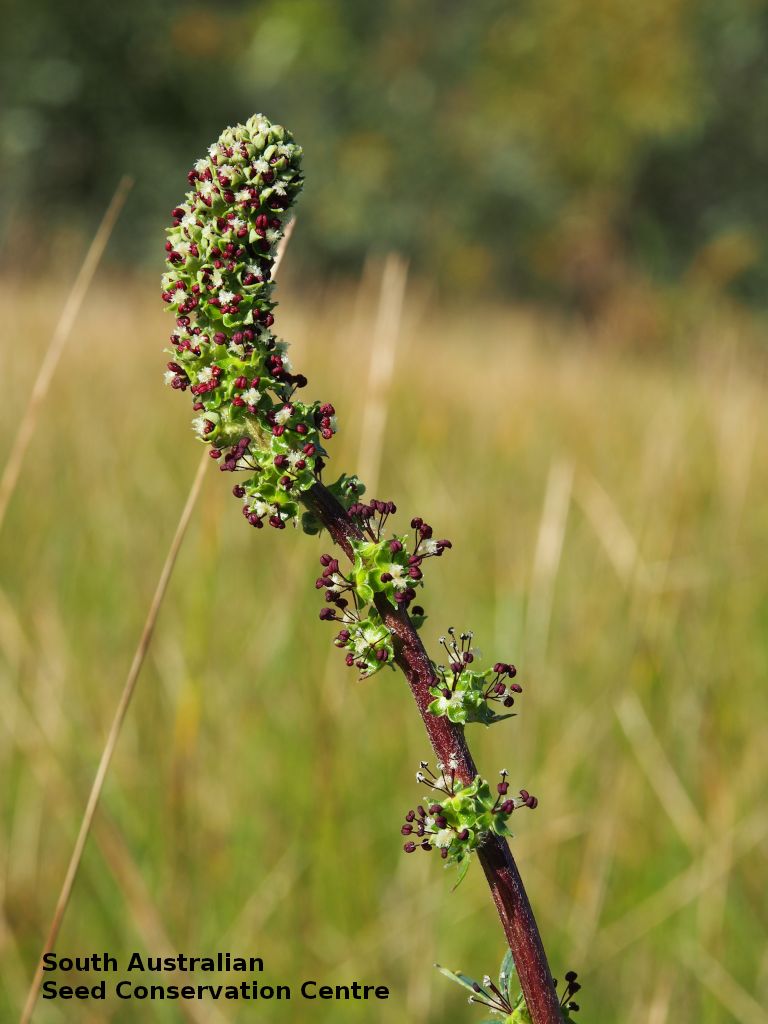
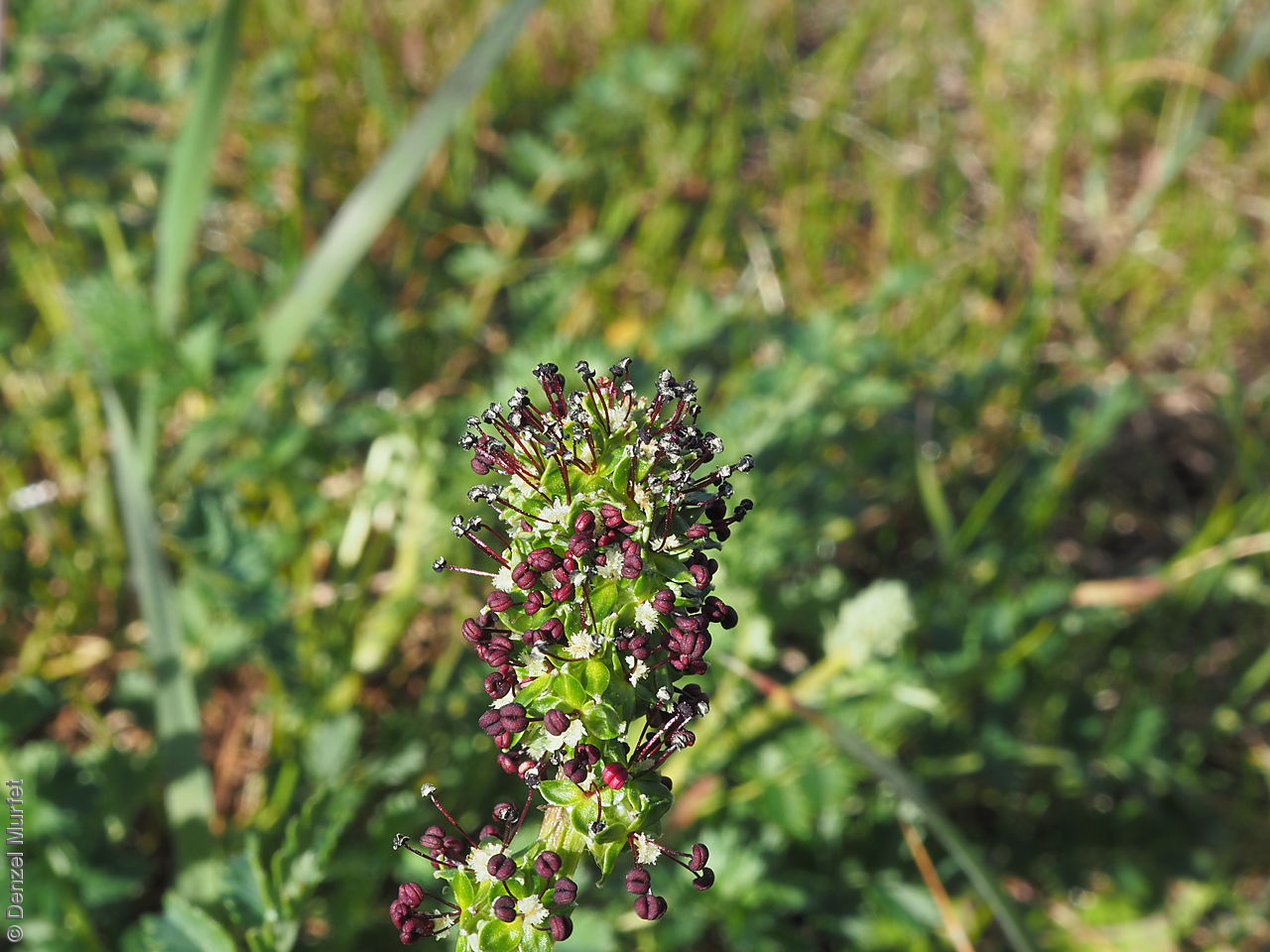
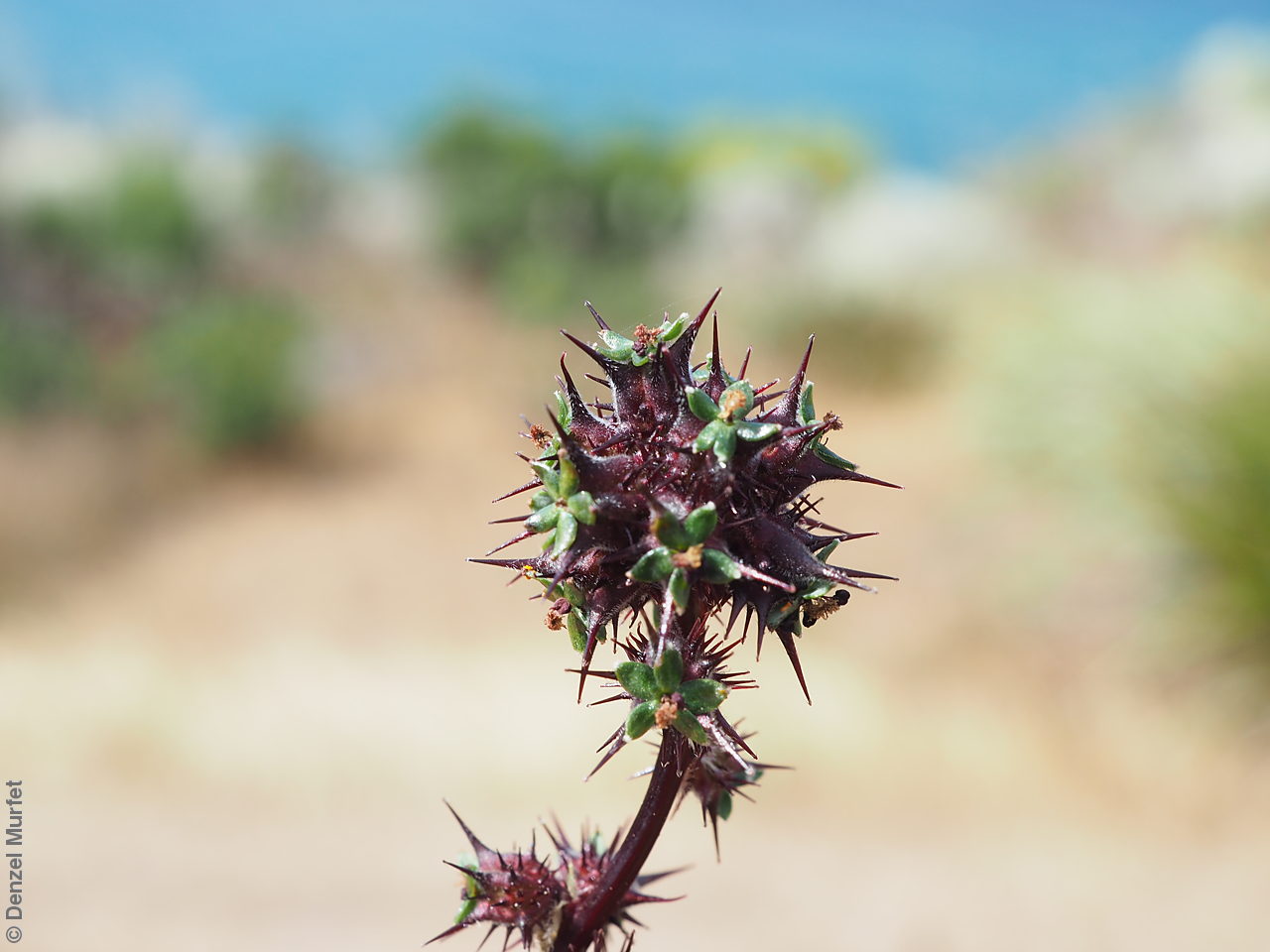
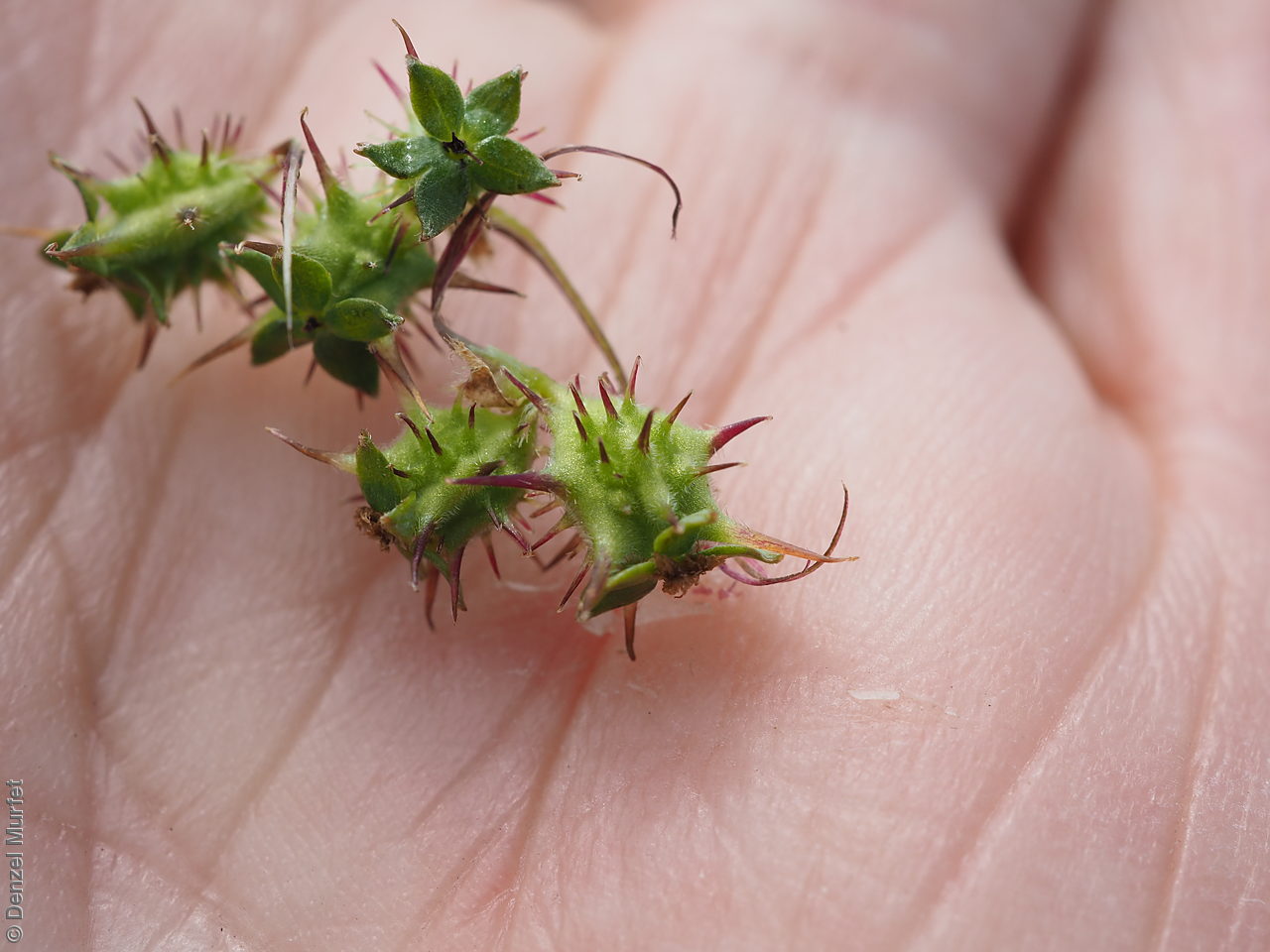
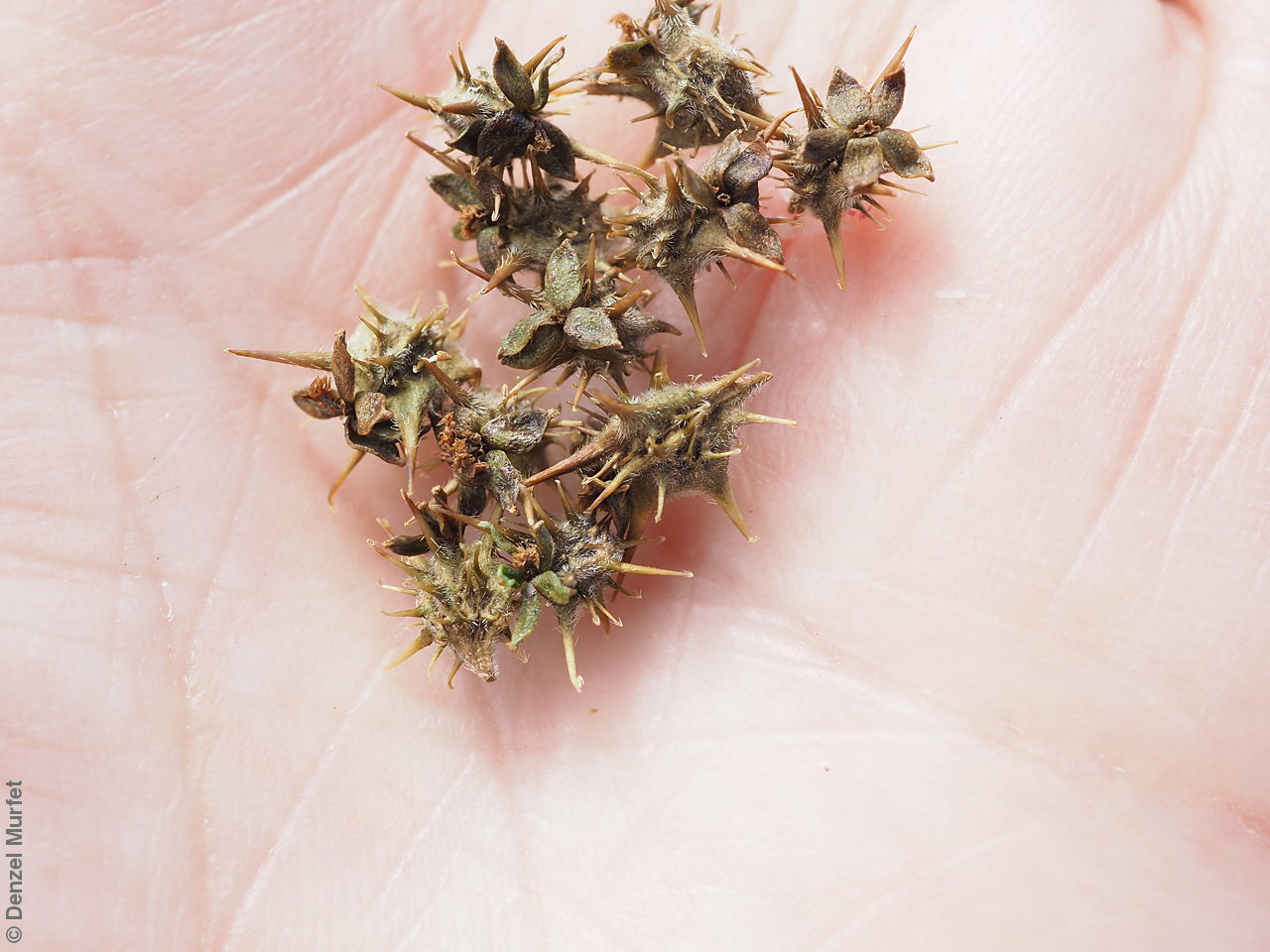
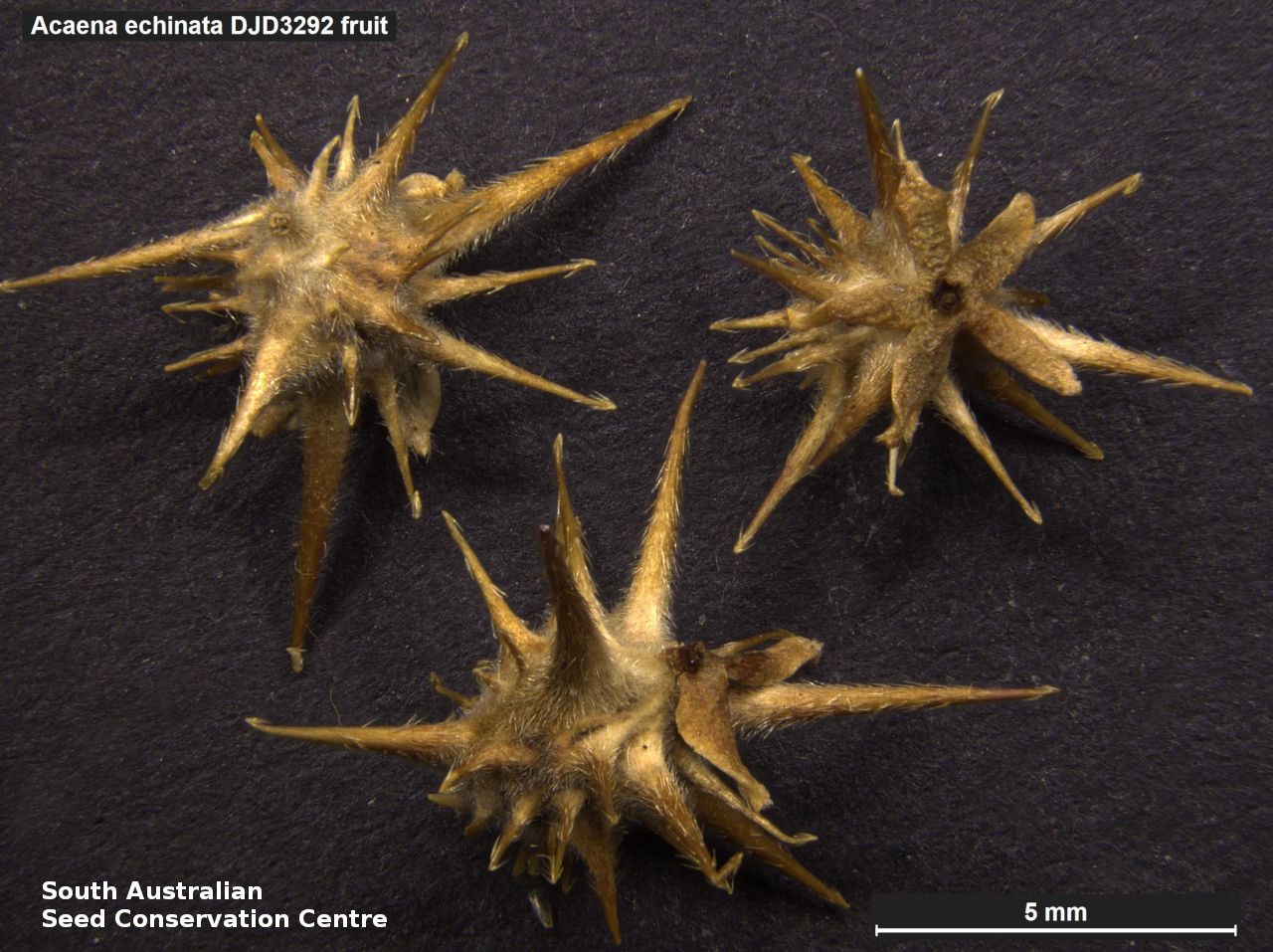
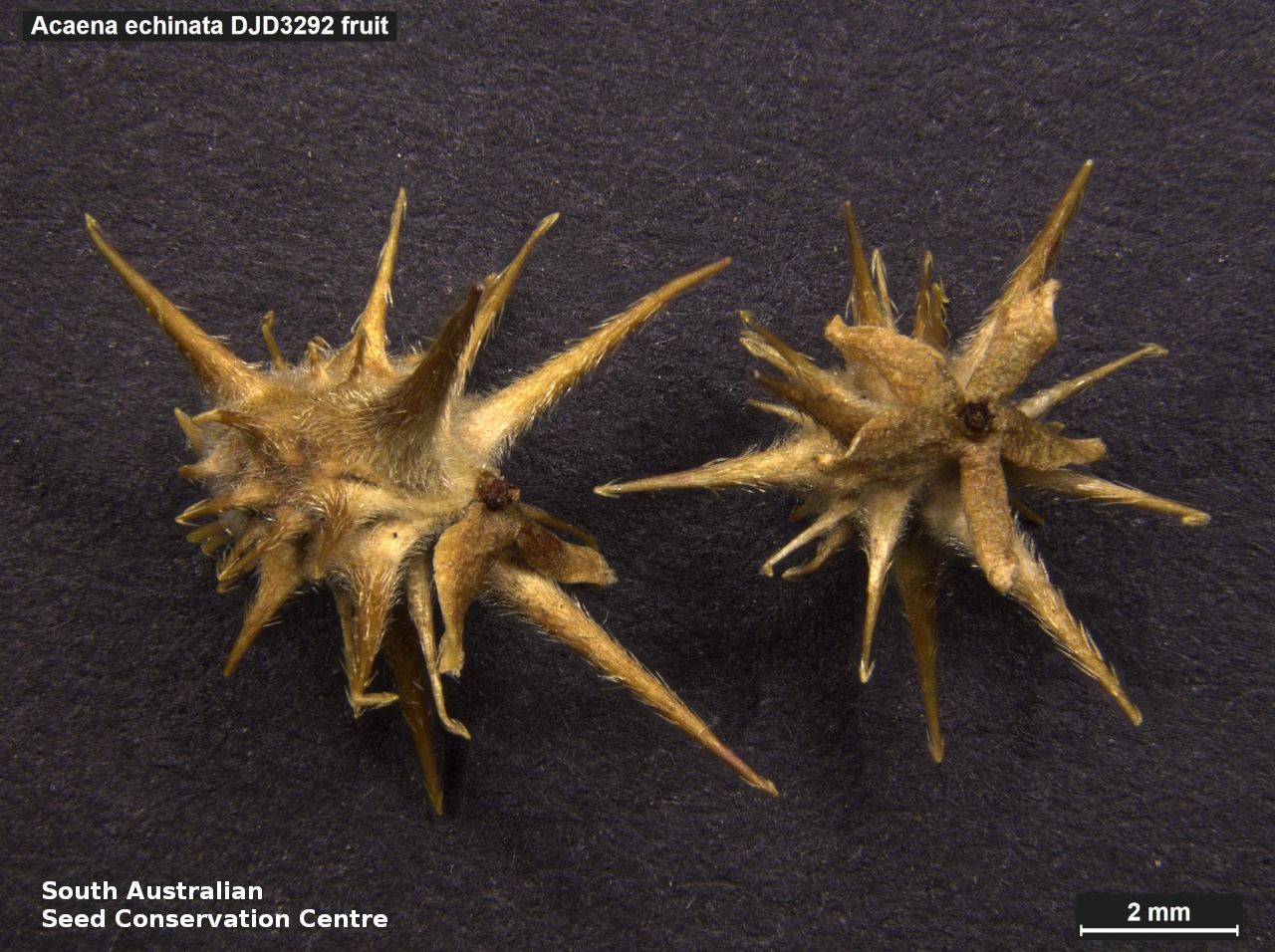

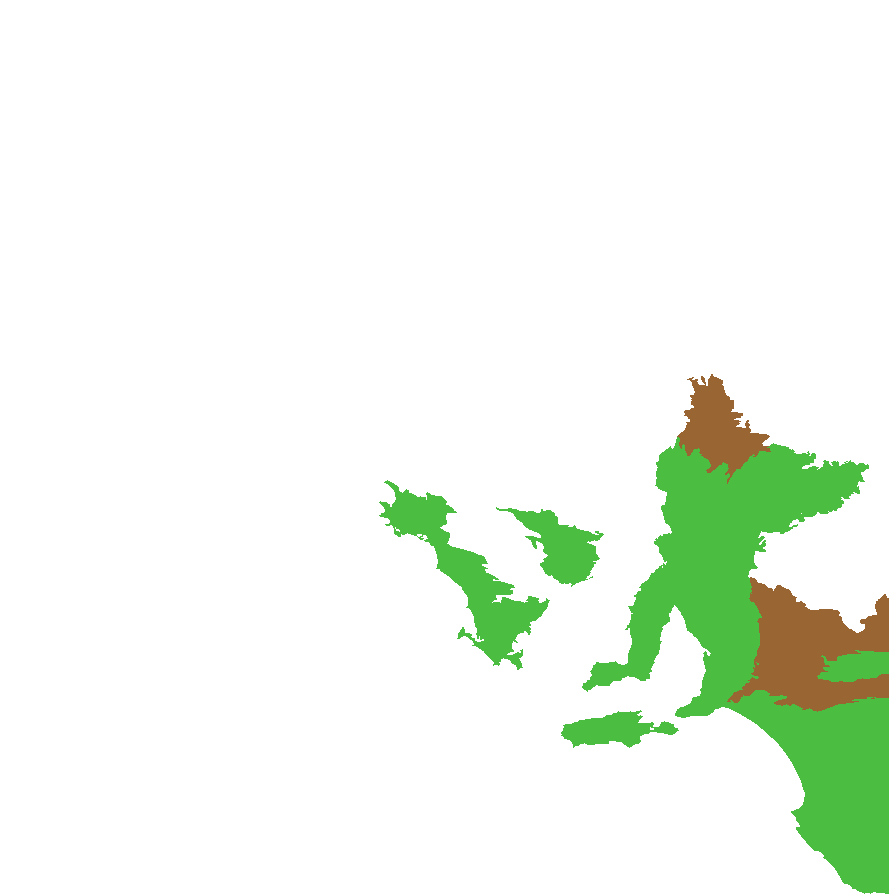
Botanical art
Prior names
Acaena behriana
Acaena ovina var. subglabricalyx
Acaena ovina var. retrorsumpilosa
Acaena echinata var. tylacantha
Acaena ovina ssp. capitulata
Acaena echinata var. subglabricalyx
Acaena echinata var. robusta
Acaena ovina ssp. maxima
Acaena echinata var. retrorsumpilosa
Etymology
Acaena from the Greek 'acaina' meaning a thorn, referring to the genus prickly fruit. Echinata from the Greek 'echinos' meaning a hedgehog, referring to the prickly fruit.
Distribution and status
Found in the southern part of South Australia, growing in a variety of vegetation association and soil types. Also found in Western Australia, New South Wales, Victoria and Tasmania. Native. Common in South Australia. Common in the other States.
Herbarium regions: Flinders Ranges, Eyre Peninsula, Northern Lofty, Murray, Yorke Peninsula, Southern Lofty, Kangaroo Island, South Eastern, Green Adelaide
NRM regions: Adelaide and Mount Lofty Ranges, Eyre Peninsula, Kangaroo Island, Northern and Yorke, South Australian Arid Lands, South Australian Murray-Darling Basin, South East
AVH map: SA distribution map (external link)
Plant description
Erect or ascending perennial herb to 70 cm high. Leaves narrowly obovate to oblanceolate, with 4 or more pairs of leaflets, to 15 cm long. Leaflets ovate to oblong, the largest to 23 mm long and 13 mm wide, margins deeply lobed or serrate, flat or recurved with upper surface glabrous or sparsely pilose, lower surface sparsely pilose, mostly on veins and margins, stipules linear to triangular. Inflorescence an interrupted cylindric spike, with dark-purple stamens. Flowering between July and March. Fruits are cylindrical head consisting of numerous seeds. Seeds are spiny, woody, ovoid to 5 mm long and 3 mm wide excluding the spines, covered in fine hairs. Spines unequal in length.
Seed collection and propagation
Collect seeds between November and May. Pick seeds that are turning brown. You can either pick whole fruit heads which will have numerous seeds or collect individual brown seeds. Be careful when collecting, as the seeds are spiny. Place the fruit heads in a tray and leave to dry for 1 to 2 weeks. If the collection consist of mainly individual seeds, then store the seeds with a desiccant such as dried silica beads or dry rice, in an air tight container in a cool and dry place. If collected with other material, then rub the dried flower heads with a rubber bung to dislodge the seeds. Use a sieve to separate any unwanted material. Seed viability is usually medium to high. Seeds are non-dormant, viable seed should germinate readily.
| Location | No. of seeds (weight grams) | Number of plants | Date collected | Collection number Collection location | Date stored | % Viability | Storage temperature |
|---|---|---|---|---|---|---|---|
| MSB | 4,100 (37.59 g) | 50 | 7-Dec-2007 | RJB76134 Southern Lofty | 70% |
Number of plants: This is the number of plants from which the seeds were collected.
Collection location: The Herbarium of South Australia's region name.
% Viability: Percentage of filled healthy seeds determined by a cut test or x-ray.